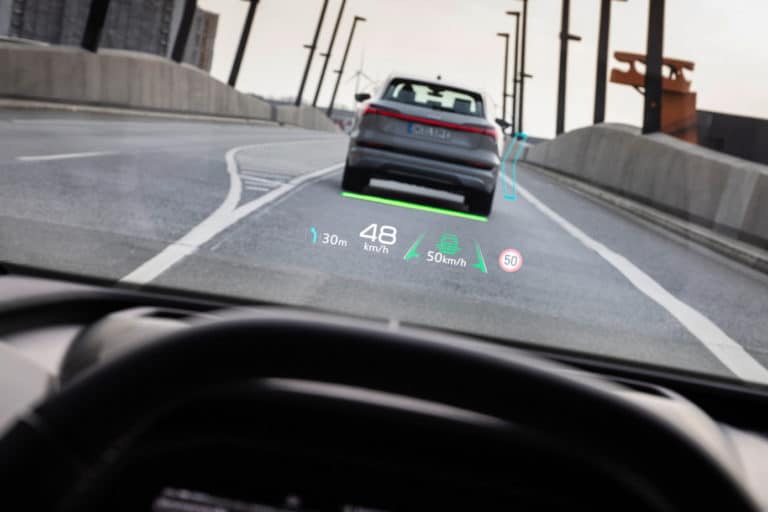
All types of companies are trying to leverage the latest, most cutting-edge technologies to improve their operations and meet changing customer demands. While new tech is often used in the entertainment and gaming industries, other sectors can also use it to their advantage.
Extended reality, more often referred to as XR, is an all-encompassing term used to describe different realities, including augmented reality (AR), virtual reality (VR) and mixed reality (MR). XR has many use cases, and while it is most commonly used to power new consumer electronics like VR headsets and smartphone AR apps, one sector that can benefit from XR technology is the shipping and logistics industries.
Keeping the supply chain running smoothly is a top priority, and XR implementation can lead to cost savings, higher efficiency and accuracy. XR is set to play a significant role in logistics and shipping into the future.
Demystifying XR Technology
XR tech can create unique environments, interactions and experiences, providing a powerful opportunity for businesses and consumers. It’s typically used to entertain consumers, but companies can implement these technologies in various ways.
The COVID-19 pandemic brought an accelerated interest in XR and the opportunities it has to offer. Businesses of all sizes and types had to adapt to a changing environment, especially with social distancing and state and federal mandates. The demand for XR was already growing, and the ongoing pandemic caused the XR market to boom in 2021.
How Can XR Play a Role in Shipping and Logistics?
One significant benefit of XR is that it can be applied to virtually any industry. Consider how it’s used in healthcare to assist with surgeries and care for patients more effectively. Shipping and logistics companies implementing XR can accelerate and simplify their processes and execute tasks more quickly and intelligently.
Here are four ways that could play out…
1. Assist with Planning, Design and Production
A major benefit of XR is that it can prevent disruptions in the supply chain because it’s capable of predictive modeling and maintenance. Companies can simulate events and conditions throughout the supply chain. This way, product designers, engineers from various facilities and architects can work together on projects before spending resources unnecessarily.
Additionally, XR can be used with computer vision technology on the production line. These two technologies can quickly scan parts of products and even detect faulty ones. This will eliminate human error and also increase overall efficiency.
2. Warehousing and Improved Transportation
XR is fast and accurate when picking orders, meaning employees can focus on other meaningful tasks. Staff can see picking lists in an XR overlay and find the most efficient routes for product transportation.
For example, AR can show navigational information onto a windshield when a driver delivers products to their destination. It can also display data about product conditions, like temperature. If it’s too hot or too cold in the truck, drivers can adjust the temperature to meet optimal needs for transportation.
3. Improve Last-Mile Deliveries
It’s no secret that last-mile delivery is a significant factor in the shipping and logistics industry. It’s often the most challenging and expensive thing that must be considered. In fact, 40% of total global logistics costs result from the final mile of the product supply chain.
E-commerce and retail are two industries that benefit from finding viable last-mile delivery solutions, and XR can be a game-changer in this area. Drivers can wear AR glasses to identify the most direct route, avoid traffic or congestion, and face other challenges on the road. This is only one example, but more use cases for AR and VR will likely emerge for transportation personnel.
4. Immersive, Safe Training
All companies need proper employee training to be successful, and shipping and logistics businesses are no exception. Workers can react to realistic situations created by AR or VR, which is more cost-effective in the long term and safer.
Consider how warehouse employees are often temporary or seasonal workers. Rather than train each one individually, companies can save time and money by using different XR technologies to provide sufficient training.
It’s expected that XR technologies, especially VR and AR, will become more widely used and more affordable in the future.
XR: Becoming a Staple in Shipping and Logistics
It’ll be important for shipping and logistics companies to consider utilizing XR to enhance operations, train staff effectively, and meet or exceed customer expectations regarding product delivery. It will be fascinating to see how companies leverage these technologies as they develop to achieve business goals and meet their bottom line.
 April Miller is a senior writer at ReHack Magazine and editorial contributor at AR Insider. She specializes in VR/AR, IoT, and business technology. See her work here and follow her @rehackmagazine.
April Miller is a senior writer at ReHack Magazine and editorial contributor at AR Insider. She specializes in VR/AR, IoT, and business technology. See her work here and follow her @rehackmagazine.






